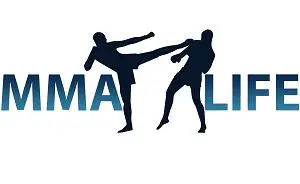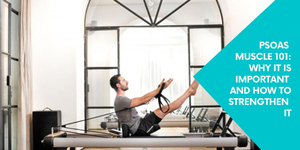In the course of training martial arts, we develop a lot of muscle imbalances. Training how to fight is important but we must also train our bodies to be strong and balanced too. Bodyweight training is a good low-maintenance way to do so.
One of the top trends for 2020, according to a global study conducted by the American College of Sports Medicine (ACSM), is bodyweight workouts. While it may go by various names, like “calisthenics” and “freeletics,” the premise is straightforward: This training modality simply uses various resistance-based movements utilizing only the weight of your own body, with optional supplementation with resistance bands and free weights.
It’s convenient, since you can do it anywhere, anytime. Whether you’re doing lunges in the backyard, air squats during your lunch break, or tricep dips on a park bench during your evening walk, bodyweight training is accessible for everyone. It’s also incredibly budget-friendly, since you don’t need fancy equipment or an expensive gym membership.
It’s also relatively new, but calisthenics has quickly exploded in popularity.
“Body weight training uses minimal equipment, which makes it an inexpensive way to exercise effectively,” reports ACSM. “Body weight training appeared for the first time in the trends survey in 2013. [It] did not appear as a survey trend option before 2013 because it only became popular (as a defined trend)...around the world over the last few years.”
In this ultimate guide to bodyweight training, we’ll walk you through:
- What is bodyweight training?
- What are the benefits of bodyweight training, and how might they improve functional fitness?
- What are common exercises in bodyweight training?
- What are example bodyweight workouts?
- And more!
The Benefits of Bodyweight Training: Why You Should Try It Today
Compared to more traditional workouts you might do in the gym, bodyweight workouts bring some distinct benefits and variations to your fitness regimen.
1. It Builds a Firm Fitness Foundation
Because bodyweight movements use your full range of motion and your body's natural abilities, it’s great for functional fitness. In other words, it helps you to develop proper, healthy movement patterns that build a strong foundation not only for future workouts, but for your everyday life, too.
This is a distinct perk that’s often overlooked by many athletes.
When it comes to more traditional gym- and weight-based training, many of the movements don't mimic natural movements your body would do in daily life. For example, how often do you need to do front squats or weighted dead bug movements in your everyday habits?
There's also the tendency and temptation to load up the weights and go heavier and heavier with each set and with each workout, often before you’ve gotten used to the proper biomechanics and form. This can lead to injuries, strains and poor progress in strength and mobility.
In contrast, bodyweight workouts by their very nature help ensure proper biomechanics, and require you to complete them in a full, natural range of motion. If you can’t do a full, deep squat with your own bodyweight, for example, you’ll realize that quickly and can’t progress until you’ve worked up the strength, flexibility and mobility you require.
Second, many bodyweight movements build strength specifically in areas that benefit your daily life. For example, popular movements like the crab walk or the bear crawl improve your coordination, core stability, etc. These then boost your efficiency in other workouts, while strengthening the muscle groups you need for daily life.
It’s no wonder bodyweight-based training is often a part of what physical therapists use when treating injuries!
2. Bodyweight Training is Highly Adaptable
With a calisthenics workout, you can quickly and easily adapt it to whatever your current level of strength and flexibility may be. This makes bodyweight training perfect for both beginners as well as experienced athletes.
You can also ramp up repetitions or scale down the workout as needed. For instance, as you get stronger, you might increase the number of reps you try to complete in a minute, or you can add unique variations that make the bodyweight movement more challenging, such as throwing in an isometric hold or a pulse to really hit specific muscle fibers.
3. Bodyweight Workouts are Very Effective and Very Efficient
Short on time? Stuck in the office all day? You can start and complete a bodyweight workout in as long or as little time as you have, whether that's 60 minutes or 10 minutes. You don’t have to waste time going to the gym, loading plates, etc.
Bodyweight workouts are also very effective, with simple ways to progress and increase the challenge of the workout. For example, you might go from traditional push-ups to push-ups while balanced on your toes, to plyometric push-ups.
Just like with a traditional workout, it’s all about progression, load and consistency.

The Potential Drawbacks of Bodyweight Training
While bodyweight workouts can greatly benefit your training routine, it does emphasize and de-emphasize certain aspects of your wellness. Depending on your goals, it’s important to keep such factors in mind.
First, most bodyweight exercises tend to emphasize muscle endurance versus muscle strength/size.
That’s not to say you CAN’T get jacked doing burpees and bear crawls. Just like at swole athletes like Michael Vazquez, the team at Barstarzz, Frank Medrano, Vadym Oleynik, and Jessica Bogdanov, to name a few. However, if you do only bodyweight training, your results may be leaner and slimmer than if you only did more traditional training.
Second, bodyweight training can really ramp up your metabolism and caloric needs, especially if you focus on high-rep workouts. Advanced bodyweight movements tend to use a lot of explosive strength, which torches calories quickly. If you’re counting your macros, you may need to adjust your diet to factor in your new training style.
Remember, bodyweight training also doesn’t have to be your only routine. It’s the perfect companion for more traditional lifting, and can be extremely beneficial if you’re wanting to improve your muscular endurance, build the mind-muscle connection and increase foundational strength and mobility.
What You Need to Get Started
It’s simple and comes down to:
- Mindset
- Movements
- Space to move
If you want results, bodyweight workouts require resolve and a can-do, positive mindset to push yourself through the fatigue, complete the benchmarks you’ve set (e.g. specific progressions or specific numbers of reps in a time period) and stay motivated. This training modality requires you to keep that heart rate up and keep those movements going, and wasting time texting a friend or scrolling through social media will quickly sabotage your bodyweight benefits.
You’ll also want a list of go-to movements. Bodyweight workouts are straightforward and not complex, so having a pre-made list that you can pick from and mix and match ensures you maximize your efficiency and effectiveness.
Finally, you’ll need enough space to move around. Because weights and equipment are not required in any way, you can squeeze in a workout in your office cubicle, a hotel room while you’re traveling, or your living room at home.
A Sample Bodyweight Workout
Ready to get started? Try bodyweight training today with the following full-body routine.
This is a circuit. You will do one set of each exercise, starting from the top down, then repeating one more time through for a grand total of two sets per movement. Adjust the reps per set based on your fitness level:
- Beginner: 5-10 reps per set
- Intermediate: 10-15 reps per set
- Advanced: 15-20 reps per set
1. Warm up
Spend 5-10 minutes warming up with gentle and easy calisthenics, such as air squats, push ups, jogging in place and some light stretching.
2. Push-ups with rotation (or T Push-ups)
This exercise hits your chest, arms and shoulders. Adding in some rotation also targets your core and hip flexors/abductors.
Get into a push-up position and do a full push-up. When you reach the top of the push-up and your arms are straight, brace your core and rotate your body to the left with your left arm in the air and pressing overhead. From the side, you'll look like a sideways letter "T." Rotate to the starting position, do another push-up, then rotate to the right.
3. Floor cobra
This ground-based exercise strengthens your entire body, but specifically targets your core and back.
Lie face down with your arms extended, palms-down. Contract your stomach, squeeze your butt and pull your shoulder blades together while lifting your arms and upper chest. Your belly button should remain on the ground. Hold this position for 3-5 seconds, then gently lower yourself back to the ground. That is one rep.
4. Floor bridge with added leg extension
Floor bridges with a leg extension targets your core and lower body.
Lie down facing the ceiling and arms extended at your side, palms down. Your knees should be bent and your feet flat on the ground.
Lift your hips while tightening your butt. From the side, you should have a straight line from your knees to your chest. While keeping your form stable, slowly extend one leg in a straight line into the air. It should be in line with the rest of your raised body. Return the leg to the starting position and lower yourself back to the ground. Then, lift and repeat with the opposite leg. One rep is counted after both legs have been raised.
5. Side plank with hip abduction
Side planks are a killer core exercise, helping to strengthen your entire lower body, as well as your shoulders, obliques and more importantly, the muscles in your lower back (perfect if you have back pain from a lot of sitting).
Get into a side plank position, resting on your left forearm. It's important to keep your abdominal muscles tucked in and tight the entire time.
Lift your right leg as high as possible, pause for 2-3 seconds, then return to the starting position. Repeat for the full number of reps you’re trying to complete before flipping over and repeating on the opposite side to complete one full set.
6. Single leg balance with multi-plane rotation
This is a movement that presents some of the quintessential benefits of bodyweight. You’re working on your strength and coordination while also improving your range of motion, flexibility and mobility.
Stand tall with all your weight on your right leg and your left leg straight but lifted a few inches off the ground in front of you. With your hands resting on your hips, slowly extend your left leg as forward as possible. Pause, then return it to the middle (all while staying balanced just on your right leg!).
Then, lift that left leg to the left as far as possible before returning to the middle.
Finally, lift it backwards. You've now hit both the frontal plane and sagittal plane. That counts as one rep.
Repeat with the same leg for the full range of reps you want before shifting your balance to your left leg and doing this movement with your right leg.
7. Squat jumps
Stand straight with your feet a shoulder width apart. Tighten your core, squeeze your butt and get down into a squat position. From the squat position, without hesitation, explode upwards and jump in the air with your arms thrown up above you.
On the downward fall, “fall” right back into a squat and hold for three seconds before repeating for the total number of reps you want.
How to Do Progressions
The above bodyweight routine works your entire body, but those are hardly the only bodyweight exercises available. We could go on and on! Other popular movements include:
- Superman (core)
- Burpees (lower body and chest)
- Walking lunges (lower body and glutes)
- Split squats (core and butt)
- Bent-knee calf raises (calves and legs)
- Mountain climbers (core)
- Russian twists (core)
- Bird dog (full body)
- Dips (shoulders and triceps)
Regardless of the movements you do, and the length of your workout, you’ll want to keep pushing forward with appropriate progressions. And unlike traditional workouts where progressions typically involve piling on the weight, progressions with bodyweight workouts is about scaling the difficulty up or down by:
- Slowing down your movement. Doing so keeps your muscles under tension, and increases strength.
- Speeding up the movement. This increases your heart rate and builds endurance.
- Adding in a pulsing movement, such as pulsing (tiny movements up and down) at the bottom of a squat.
- This is incredibly challenging and you’ll “feel the burn” while increasing endurance and strength.
- Going unilateral. This is fancy personal training-speak for taking out one of the limbs involved in a movement. Think, going from a plank (using two arms) to a single-armed plank.
- Increasing the number of reps. This builds strength and endurance.
- Increasing the number of reps while keeping your time limit the same or reducing the amount of time you
- allot to complete those reps. This really enhances endurance and maximizes the cardiovascular benefits of the workout.
- Reducing the rest period between sets (or eliminating rest completely).
Additionally, you can add optional weights or resistance. Just because you’re doing bodyweight movements doesn’t mean equipment is banned, especially if you’re doing your bodyweight training in a gym.
Nearly all bodyweight movements can be modified by:
- Holding weights in your hand while doing them (e.g. holding dumbbells in your hand while doing jump squats)
- Putting on a resistance band. For example, you could wear a band around your knees while doing the floor bridge and leg extension.
- Wearing a weighted vest while exercising.
Finally, there’s no “right” amount of reps, sets or time. Because bodyweight workouts require you to be more aware of how your body feels and your sense of fatigue, you’ll be investing a lot of energy into the crucial mind-muscle connection.
If you aren’t feeling winded and sweaty after a workout, it’s time to add a variation or increase the intensity. If you’re feeling fatigued or chronically low on energy/sore, it may be time to scale back the intensity or increase your rest days and recovery.
Best Resources for Bodyweight Fitness Training
While doing bodyweight training, you will invariably have questions about it. Here are some of the best resources on bodyweight training for you to check out:
Barstarzz: Barstarzz is a calisthenics website that sells equipment, clothing, DVDs, and a plehora of workou programs. Their Instagram and Youtube page currently has over 500k and 700k followers respectively and provides plenty of video content to meet your calisthenic needs.
Bodyweight Fitness Subreddit: This subreddit is one of the most popular communities for bodyweight fitness. It boasts over 1.3 million members currently and has an extensive database for questions relating to bodyweight training.
42 Best Bodyweight Exercises from Nerd Fitness: Nerd Fitness is a site that focuses on fitness for the average Joe but has a lot of content relating to bodyweight training. The link provided is an extremely comprehensive list of the best bodyweight exercises.




